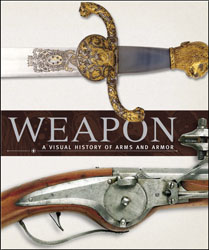| 22.01.2022, 07:35 | |||||
Автор книги: коллектив Война старше цивилизации - на самом деле она старше самой человеческой расы, как показывают находки, дошедшие до нас от наших предков-гоминидов, - а оружие - это орудия труда солдат. Страницы этой книги рассказывают о важности оружия, показывая, как оно быстро выросло из примитивных орудий, используемых для охоты на диких животных, и очень быстро приобрело характеристики, которые определяли его на протяжении тысячелетий. Сначала было ударное оружие, используемое для прямого удара по противнику, начиная с дубинки и кончая топорами, мечами, кинжалами и копьями. Существовало также метательное оружие, которое запускалось издалека, начиная с заостренной палки - метательного копья, развившееся в стрелы и арбалетные болты. Пороховое оружие, появившееся с 15 века, не сразу заменило ударное или метательное оружие. В 17 веке мушкетеров защищали пикинеры, а наполеоновская кавалерия вооружалась саблями для ближнего боя. Даже в начале 21 века штык - потомок холодного оружия прошлых лет, по-прежнему является частью экипировки пехотинца. Warfare is older than civilization—in fact it is older than the human race itself, as clues from our hominid ancestors show—and weapons are the tools of the soldier’s trade. The following pages reveal the importance of weapons, showing how they grew quickly from primitive implements used for hunting wild animals, and soon took on the characteristics that were to define them for thousands of years. First there were percussion weapons, used to strike an opponent directly, beginning with the club and proceeding through axes to swords, daggers and thrusting-spears. There were also missile weapons, propelled from a distance, starting with the sharpened stick—hurled as a javelin—and developing into throwing spears, arrows, and crossbow bolts. Gunpowder weapons, which made their presence felt from the 15th century, did not immediately replace percussion or missile weapons. In the 17th century musketeers were protected by pikemen, and Napoleonic cavalry plied swords in close-quarter combat. Even at the beginning of the 21st century the bayonet, descendent of the edged weapons of yesteryear, is still part of the infantry soldier’s equipment. | |||||
|
| |||||
| | | |||||
| Всего комментариев: 0 | |
